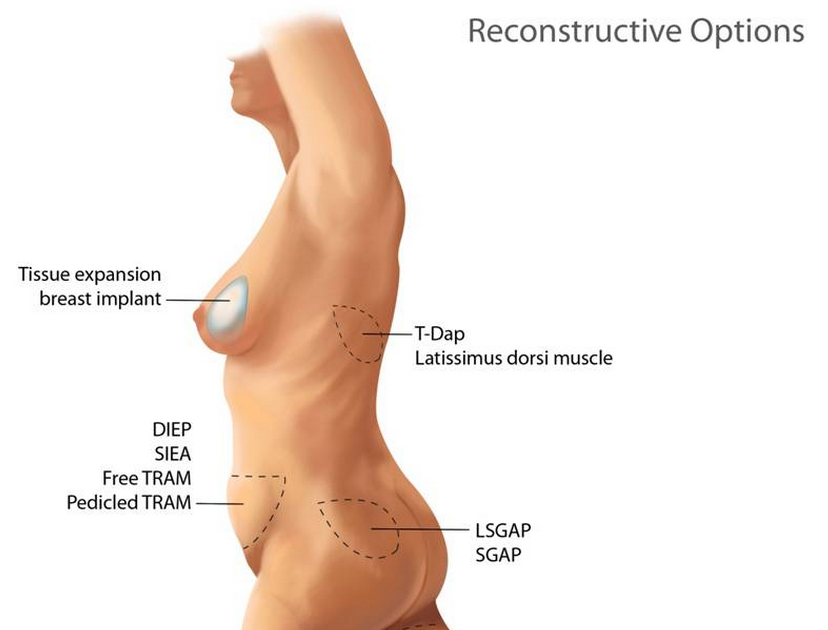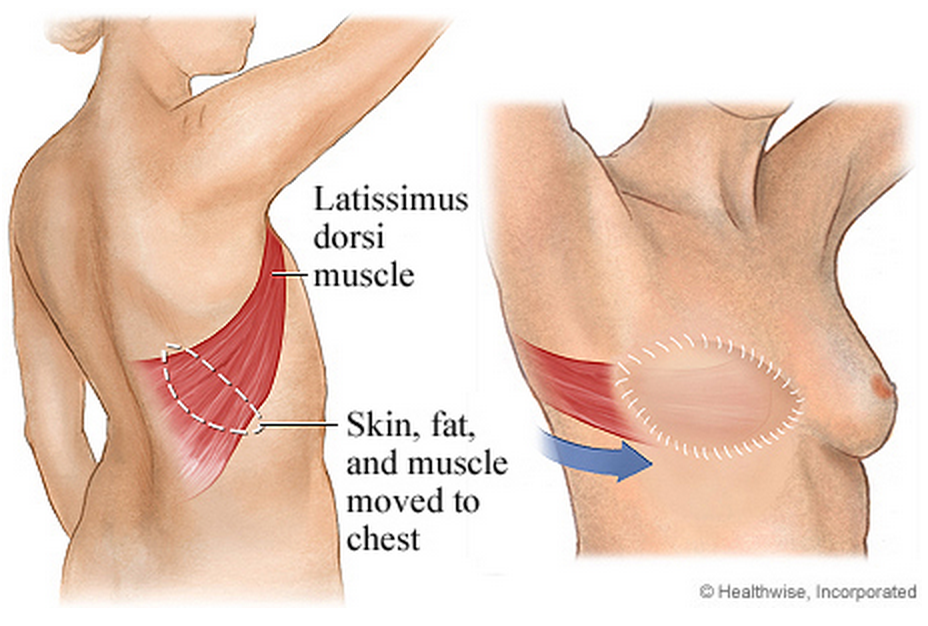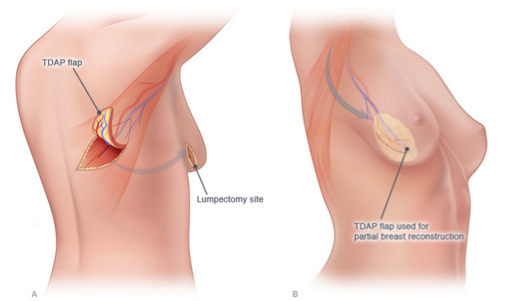
As you know, the skilled plastic surgeons at South Bay Plastic Surgeons in Torrance perform a variety of breast reconstruction procedures. This article describes two breast reconstruction methods: Latissimus Dorsi Flap and TDAP Flap.
Both of these two breast reconstruction procedures use tissue (flaps) from the back to reconstruct the breast(s). The Latissimus Dorsi muscle is located just below the shoulder and behind the armpit. It’s involved in pulling movements, such as climbing a ladder or rowing.
The Benefits of Flap Reconstruction Compared with Implant Reconstruction
The primary benefit of flap reconstruction, whether it uses tissue from the back or the abdomen, is the ability to utilize tissue from the patient’s own body, which can lead to better healing and/or a more natural appearance. Sometimes additional tissue (flap) is needed to replace or add to skin damaged from radiation. The most common reason for Latissimus flap or TDAP reconstruction is thin breast skin, radiated breast skin, or a deficiency in breast skin. Latissimus flap and TDAP reconstruction typically are used in conjunction with an implant, although there are some cases where an implant may not be necessary.
The Best Patients for Latissimus Dorsi or TDAP Flap Reconstruction
The best candidate for one of these two procedures is a woman who:
- Does not need or has completed radiation treatment
- Has too little abdominal tissue or gluteal tissue to use for reconstruction
- Has had previous abdominal surgery with scarring that makes it impossible to use abdominal tissues for reconstruction
- Wants to avoid abdominal surgery
As with other breast reconstruction procedures, patients must be tobacco-free to minimize the risks of anesthesia and to optimize wound healing.
Some Considerations Regarding the Latissimus Dorsi or TDAP Flap Reconstruction
- Skin from the back is slightly different in color and texture from breast or belly skin.
- Although the procedure leaves a scar on the back, the South Bay Plastic Surgeons try to place the incision in the area hidden by a bra strap.
- Because a Latissimus Dorsi flap doesn’t use abdominal tissues, both the procedure and recovery time tend to be shorter than with abdominal flap reconstruction.
- This is an excellent procedure for women with small- to medium-size breasts, since there’s little fat on that part of the back. For patients with larger breasts, a saline or gel-filled breast implant can be added to the procedure to achieve the desired size.
- Most women do not have any noticeable changes in their ability to participate in most activities and sports.
Latissimus Dorsi Flap Reconstruction
 In a Latissimus Dorsi flap reconstruction, an ellipse of muscle, skin, fat and blood vessels from the shoulder area is tunneled beneath the skin around to the chest wall to rebuild the breast. The blood vessels are left intact to sustain the flap in its new position.
In a Latissimus Dorsi flap reconstruction, an ellipse of muscle, skin, fat and blood vessels from the shoulder area is tunneled beneath the skin around to the chest wall to rebuild the breast. The blood vessels are left intact to sustain the flap in its new position.
TDAP Flap Reconstruction
 The TDAP flap, which is also called a Thoracodorsal Artery Perforator flap or a TAP flap, is similar to the Latissimus Dorsi flap in that reconstruction tissues are obtained from the shoulder area. The biggest difference, however, is that in the TDAP, the skin, fat and blood vessels are used but the muscle is not. The tissues are literally rotated into place (see photo).
The TDAP flap, which is also called a Thoracodorsal Artery Perforator flap or a TAP flap, is similar to the Latissimus Dorsi flap in that reconstruction tissues are obtained from the shoulder area. The biggest difference, however, is that in the TDAP, the skin, fat and blood vessels are used but the muscle is not. The tissues are literally rotated into place (see photo).
As you can see in the photo, the scar from the TDAP is generally hidden in the horizontal area covered by a bra.


Leave a Reply